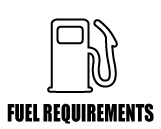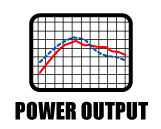Map Notes for 2007-2009 Legacy GT and 2007-2009 Outback XT
Supported Vehicles:
USDM 2007-2009 Legacy GT AT/MT
USDM 2007-2009 Legacy GT SpecB MT
USDM 2007-2009 Outback XT AT/MT
Map Revision:
2007-09 Legacy GT, Spec B, Outback XT
- Stage0 v400
- Stage1 v400
Map Availability:
- Download from the COBB Tuning Subaru WRX OTS Map Database.
Required Accessport Firmware:
- V3: 1.7.4.0-17431 or greater
Non-Performance Maps: All Models
Anti-Theft Mode
- Will not allow vehicle to start
Economy Mode MT
- Fuel Requirements: 91 octane or better
- Intake Requirements: Stock airbox and stock filter
- Exhaust Requirements: Stock exhaust
- Boost Control Solenoid: Stock boost solenoid or COBB 3-port Boost Control Solenoid
- Boost Targets: Mechanical minimum (typically around 6psi - 12psi)
- Rev Limiter: 6700 RPM
* Not intended for aggressive driving *
Valet Mode MT
- Fuel Requirements: 91 octane or better
- Intake Requirements: Stock airbox or stock filter
- Exhaust Requirements: Stock exhaust
- Boost Control Solenoid: Stock boost solenoid or COBB 3-port Boost Control Solenoid
- Boost Targets: Mechanical minimum (typically around 6psi - 12psi)
- Rev Limiter: 3200 RPM
* Not intended for aggressive driving *
All Stage1 performance maps include a “HWG” and “LWG”:
- HWG: Higher wastegate duty cycles (HWG) for use when normal wastegate calibration produces lower than targeted boost (i.e. under boost).
- LWG: Lower wastegate duty cycles (LWG) for use when normal wastegate calibration produces higher than targeted boost (i.e. over boost).
Monitoring Boost Levels:
The best way to determine if you are hitting target boost is to watch the TD Boost Error parameter. This parameter is your target boost (including altitude and temperature compensations) minus your actual boost (negative values mean you are over the target by the amount while positive values mean you are under). Ideally you want this value to be between 0 and 1.0 at wide open throttle (WOT), but -1.0 to 1.0 is acceptable assuming that you don’t have any significant knock corrections. Overboosting is more likely to occur in higher gears and with colder outside temperatures, so be sure to verify boost levels during these conditions.
High Altitude:
A quick note for those of you that live at higher altitudes. It is common for turbocharged cars at higher altitudes to run less boost pressure due to lower air pressure and air density. Your turbocharger has to work harder to compress a less dense air mass compared to the same turbocharger at sea level. This must be factored in when determining if your turbocharger is running the proper amount of boost pressure and not being pushed beyond its efficiency range.
Example: If you live in Denver at 5280 ft and are trying to run a peak boost pressure of 15 psi, your turbocharger has to work the equivalent of making ~17.5 psi at sea level.
There are barometric compensations within the factory ECU that lower boost targets as you climb in altitude in an effort to keep the turbocharger in its optimal range. The COBB performance maps utilize these compensations and therefore, it is perfectly normal for the final boost target to be lower than what is listed for your map.
Revision Notes:
| Version # | Notes: |
|---|---|
| v400 | Maps updated to eliminate unnecessary DTC Supression or updated versions for parity with other maps/vehicles within the platform |
| v350 | Maps have been updated to eliminate unnecessary DTC suppression or to reflect an updated code base |
| v301 | Updated calibration to help prevent turbo over boost conditions and to increase the window for knock feedback activity. This release also corrects an issue with mismatched mapping/vehicle identification for the 2007 LGT AT vehicle. |
| v300 | Now compatible with Launch Control and Flat-Foot Shifting (LC/FFS) features (MT only). For complete details on how to enable and use the LC/FFS functionality, please visit this FAQ. These maps have been created with the newly-released AccessTUNER Pro 1.9.0.0. Maps created with this version of AccessTUNER software require the latest AccessPORT firmware (version 1.6.4.0-1189 or greater) be installed. All AccessPORTs must first be updated before using maps created with this latest AccessTUNER version. AccessPORT Manager 2.0 will automatically update the AccessPORT to the latest firmware version and is available for download on the COBB Tuning Support web page. |
| v103 | The calibration has been updated to eliminate the over boost conditions when the car is driven under heavy loads or held at wide open throttle (WOT) from too low of an RPM. Turbo controls were also enhanced to help prevent an over boost condition. |
| v101 | The calibration has been updated to allow the vehicle to achieve the boost targets when driving in colder ambient temperatures. Table changes have been made to limit the fuel cut function that occurs when the engine RPM hit the Rev Limiter. |
| v100 | Original Mapping. Adjusted Fuel, Ignition Advance, Boost Control, Camshaft Phasing (AVCS), closed loop control, knock corrections, throttle mapping, and base programming logic. Revised Closed Loop management (REFLASH MAP CHANGE) for improved driving quality. Smoothed out boost related values and improved boost response at lower RPM. Modified the fuel metering calculations for more accurate fueling calculations for the specified fuel. |
Copyright 2025 © COBB Tuning Products LLC. All Rights Reserved. | www.cobbtuning.com


